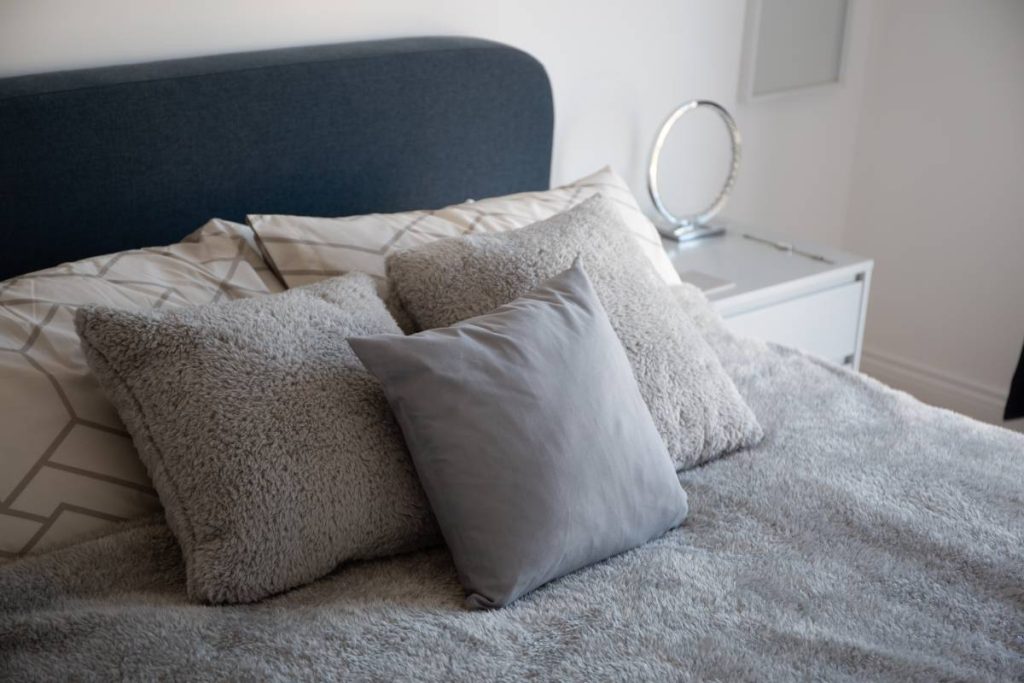
How often should you replace pillows? How do you know when you need a new pillow?
When it comes to the often-overlooked essentials of a good night’s sleep, pillows play a crucial role in providing comfort and support.
In this discussion, we will explore three key aspects related to pillows: their lifespan and when to consider a replacement, signs indicating the need for a new pillow, and practical tips for extending their longevity through proper care. Understanding these elements is essential for optimizing sleep quality and maintaining a healthy sleep environment.
You might like: Cheeky Money Saving Tips for Your Next Camping Adventure
How often should you replace pillows?
The frequency with which you should replace pillows depends on several factors, including the type of pillow, your sleeping habits, and personal preferences. Here are some general guidelines:
Pillow Type
- Feather and Down Pillows: These types of pillows typically have a longer lifespan and can last for 5-10 years or more with proper care.
- Synthetic Pillows: These pillows may need to be replaced more frequently, usually every 1-2 years, as they tend to wear out faster.
Sleeping Habits
If you have a tendency to sleep on one particular side of the pillow, it may wear out more quickly in that area. Flipping and rotating your pillow regularly can help extend its lifespan.

Hygiene
Pillows can accumulate dust mites, allergens, and sweat over time. If you’re not using a pillow protector or regularly washing your pillow cover, you might need to replace your pillow more often. Washing your pillows or using pillow protectors can help maintain cleanliness.
Comfort
If your pillow is no longer providing the support and comfort you need for a good night’s sleep, it’s probably time to replace it. Over time, pillows can lose their shape and become less supportive.
Quality
Higher-quality pillows may last longer than cheaper ones. Investing in a good-quality pillow may be more cost-effective in the long run.
In general, it’s a good idea to inspect your pillows regularly and replace them when they show signs of wear and tear or if you’re no longer getting the support you need. Washing your pillows according to the manufacturer’s instructions can also help prolong their lifespan and maintain hygiene. If you have allergies or respiratory issues, replacing pillows more frequently might be beneficial to minimize exposure to allergens.
How do you know when you need a new pillow?
Knowing when to replace your pillow involves paying attention to several factors related to its condition, your comfort, and any potential health considerations. Here are some signs that it might be time for a new pillow.

- Lack of Support:
- If your pillow is no longer providing the support your head and neck need, and you wake up with stiffness or discomfort, it’s a clear sign that the pillow may be worn out.
- Visible Wear and Tear:
- Inspect your pillow for visible signs of wear and tear. Look for flattened areas, lumps, or a loss of shape. If you notice these issues, it’s time to consider a replacement.
- Allergies or Respiratory Issues:
- If you have allergies or respiratory problems, pillows can accumulate dust mites, allergens, and other particles over time. If you’re experiencing increased allergy symptoms or respiratory issues, it might be worth replacing your pillow, especially if it’s been a while since you last did so.
- Odour:
- An unpleasant odour coming from your pillow, even after washing, may indicate the presence of mould, mildew, or other allergens. If the odour persists, it’s a sign that the pillow may need to be replaced.
- Age of the Pillow:
- Consider the age of your pillow. Even with proper care, pillows have a finite lifespan. If you’ve had your pillow for several years, it’s worth evaluating its condition.
- Changes in Sleep Quality:
- If you’ve noticed a decline in the quality of your sleep, and you’ve ruled out other factors, your pillow might be a culprit. Discomfort during the night can lead to restless sleep and even contribute to issues like headaches and neck pain.
- Pillow Flatteness:
- Over time, many pillows tend to flatten. If your pillow has lost its loft and is noticeably flatter than when you first got it, it may no longer provide the necessary support.
- Hygiene Issues:
- If your pillow is not easily washable or you’ve had difficulty maintaining its cleanliness, it may be time for a replacement. Hygiene is crucial for a healthy sleeping environment.
Remember that individual preferences vary, and what works for one person may not work for another. If you’re uncertain about whether to replace your pillow, consider consulting with a healthcare professional or trying out different pillows to find one that suits your needs and preferences.

How to take care of pillows
Proper care of your pillows can help extend their lifespan and ensure a clean and comfortable sleep environment. Here are some general tips on how to take care of pillows from the Sleep Foundation
| Pillow Type | Care Guidelines |
|---|---|
| Memory Foam | Many down and feather pillows can be machine washed, but some should be dry cleaned. When machine washing a down or feather pillow, use the gentle cycle, warm water, and a mild detergent. Sometimes it might be necessary to run the rinse cycle more than once to remove all the detergent. You can air-dry the pillows or place them in a dryer on a low setting for about 20 minutes. Wash these pillows every 3 to 6 months, and replace them every 1 to 3 years. You can tell it’s time for a replacement if the pillow doesn’t spring back to its normal shape after you fold it in half. |
| Polyfoam | A memory foam pillow should not be placed in a washing machine or dryer. Instead, it is best to spot-clean this pillow when necessary. You can thoroughly hand wash the pillow every 2 months with a gentle detergent and let it air dry. Memory foam pillows should be replaced every 2 to 3 years. |
| Down/Feather | Many down and feather pillows can be machine washed, but some should be dry cleaned. When machine washing a down or feather pillow, use the gentle cycle, warm water, and a mild detergent. Sometimes it might be necessary to run the rinse cycle more than once to remove all the detergent. You can air dry the pillows or place them in a dryer on a low setting for about 20 minutes. Wash these pillows every 3 to 6 months, and replace them every 1 to 3 years. You can tell it’s time for a replacement if the pillow doesn’t spring back to its normal shape after you fold it in half. |
| Polyester and Down Alternative | Down alternative and polyester pillows can be machine washed on the gentle cycle with mild detergent and cold water, and dried in a dryer on a low setting. Wash these pillows every 3 to 6 months. Down alternative pillows tend to last approximately 1 to 2 years. Polyester pillows are among the least durable and should be replaced every 6 months to 2 years. |
| Latex | Avoid washing latex pillows in a washing machine. You can spot clean stains and hand wash the pillow with warm water and a mild detergent every 2 to 3 months. Don’t submerge the pillow in water or wring it dry. Instead, lay the pillow flat to air out. You should replace your latex pillow every 2 to 4 years. |
| Buckwheat | Moisture can ruin buckwheat pillows, so it’s best to protect your buckwheat pillow with a removable, washable cover. Most buckwheat pillows can be opened up, allowing you to dry the buckwheat hulls in the sun in case of an accidental spill. You can also rejuvenate your pillow by replacing the buckwheat hulls once they start to flatten out, about once every 3 years. |
| Pillowcases | Wash your pillowcases at least once a week. Different materials have different care instructions, so check the manufacturer’s label for guidance. Replace pillowcases every 1 to 2 years. |
In conclusion
The lifespan, signs of wear, and proper care of pillows are fundamental considerations for anyone seeking restful and rejuvenating sleep. Recognizing when a pillow has served its purpose and needs replacement, paying attention to visible cues of wear and tear, and implementing a routine care regimen is integral to ensuring pillows remain supportive and hygienic.
Investing time and effort into pillow maintenance can yield substantial benefits, leading to nights of more comfortable and restorative sleep. Sweet dreams await those who prioritize the well-being of their sleep companions – the humble yet indispensable pillows.





